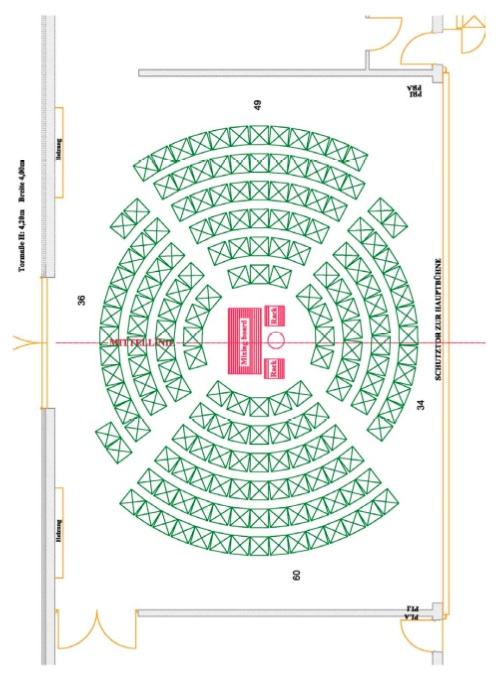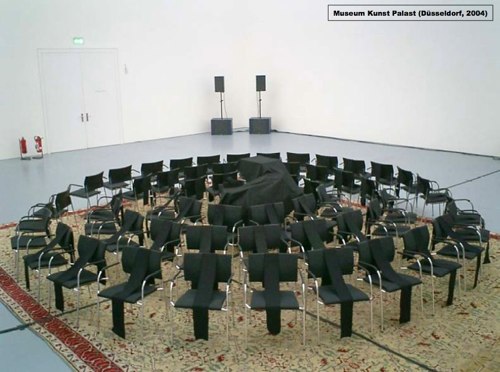Many of my critics will point out to you that no one will be arrested for simply disparaging the flag. Only the rascally Communist flag burners are going to go to jail. Here are two points I like to make to them. First, many First Amendment scholars believe that if that is the case, arrests will be overturned until every possible non-political flag desecrator is in jail -- only then will protestors be prosecuted. So I won't go to jail for my political beliefs until Barbara Bush goes to jail for her flag hair bandanna. (That's one way to ensure that no freedom of speech is quashed by this law.) Second, Jehovah's Witnesses and others who refuse to salute the flag are committing a desecration (failure to give the flag the respect the law commands.) This desecration is just as illegal as any radical flag burning. These people will all go to jail under the new Constitution. Refusual to salute the flag is considered desecration, but acceptable under the current First Amendment. Any new change to the constitution will supercede the original.
{Warren S. Apel}
Extracted from:http://www.esquilax.com/flag/define.shtml
Legionnaire's Disease
An art exhibit featuring Old Glory has city and state officials scrambling to do
something BY MICHAEL KIEFER
Last Friday at the Phoenix Art Museum, a group of ladies on a tour stood around the infamous U.S. flag on the floor, peering over the edges, their faces frozen in smiles, looking for the emperor's new clothes. The work in question, Dread Scott's 1988 "What Is the Proper Way to Display the U.S. Flag?", along with a 1970 piece titled "The American Dream Goes to Pot," by Kate Millet, which features a flag in a toilet in a jail cell, has been all over the news. Angry World War II veterans have twice yanked the flag from the toilet; others picked the flag from the Dread Scott piece off the floor and properly folded it.
[...]
The show at the Phoenix Art Museum, "Old Glory: The American Flag in Contemporary Art," sets those obvious patriot-baiting works in a context that is lost to the TV audience watching American Legionnaires tussling over the flag. And, unfortunately, the context was also lost to state and city officials who are seriously considering ways to censor the show and censure the museum for daring to show it.
Extracted from: http://www.esquilax.com/flag/artexhibit-04041996.pdf
Reported by the Associated Press on 3-23-97, American Indian artist Steven Leyba experienced first-hand governmental censorship of his work, Wounded Knee Decomposition I, which was on display in an Albuquerque art gallery. The mixed-media work, which commemorates the 1890 massacre in South Dakota, includes two mutilated American flags. City officials asked the artist to remove it from public view, and when he refused, they erected a partition to cover it from view. The artwork was eventually moved, and the partition was taken down. Another fine example of an obtrusive government meddling in affairs which would be better decided by healthy public debate.symbolic speech : conduct that is intended to convey a particular message which is likely to b
http://www.esquilax.com/flag/culture.shtml
e understood by those viewing it
Example: it is well established that wearing certain clothing can be a form of protected symbolic speech -- City of Harvard v. Gaut, 660 N.E.2d 259 (1996)
(compare commercial speech pure speech)
Note: Symbolic speech is entitled to free speech protection under the First Amendment to the U.S. Constitution unless its regulation is within the constitutional power of the government and is justified by an important government interest, and the restriction placed on it by regulation is no greater than is essential to the furtherance of that interest.
Extracted from: http://dictionary.lp.findlaw.com/scripts/results.pl?co=dictionary.lp.findlaw.com&topic=bf/bf7657c95bca28020ec9503b1c50a000
| Street v. New York, 394 U.S. 576 (1969) |
|
Although the case marked the first opportunity for the court to deal with the actual destruction of a flag, the justices declined to consider the legalities of flag desecration. But the court determined that the New York statute under which Street had been convicted was unconstitutionally applied because it permitted the veteran to be punished merely for speaking defiantly about the American flag. Among the dissenters: Hugo Black, one of the court's leading champions of the First Amendment. "It passes my belief that anything in the Federal Constitution bars a State from making the deliberate burning of the American flag an offense," he wrote. "It is immaterial to me that words are spoken in connection with the burning." http://www.freedomforum.org/packages/first/Flag/sctcases.htm#street |



